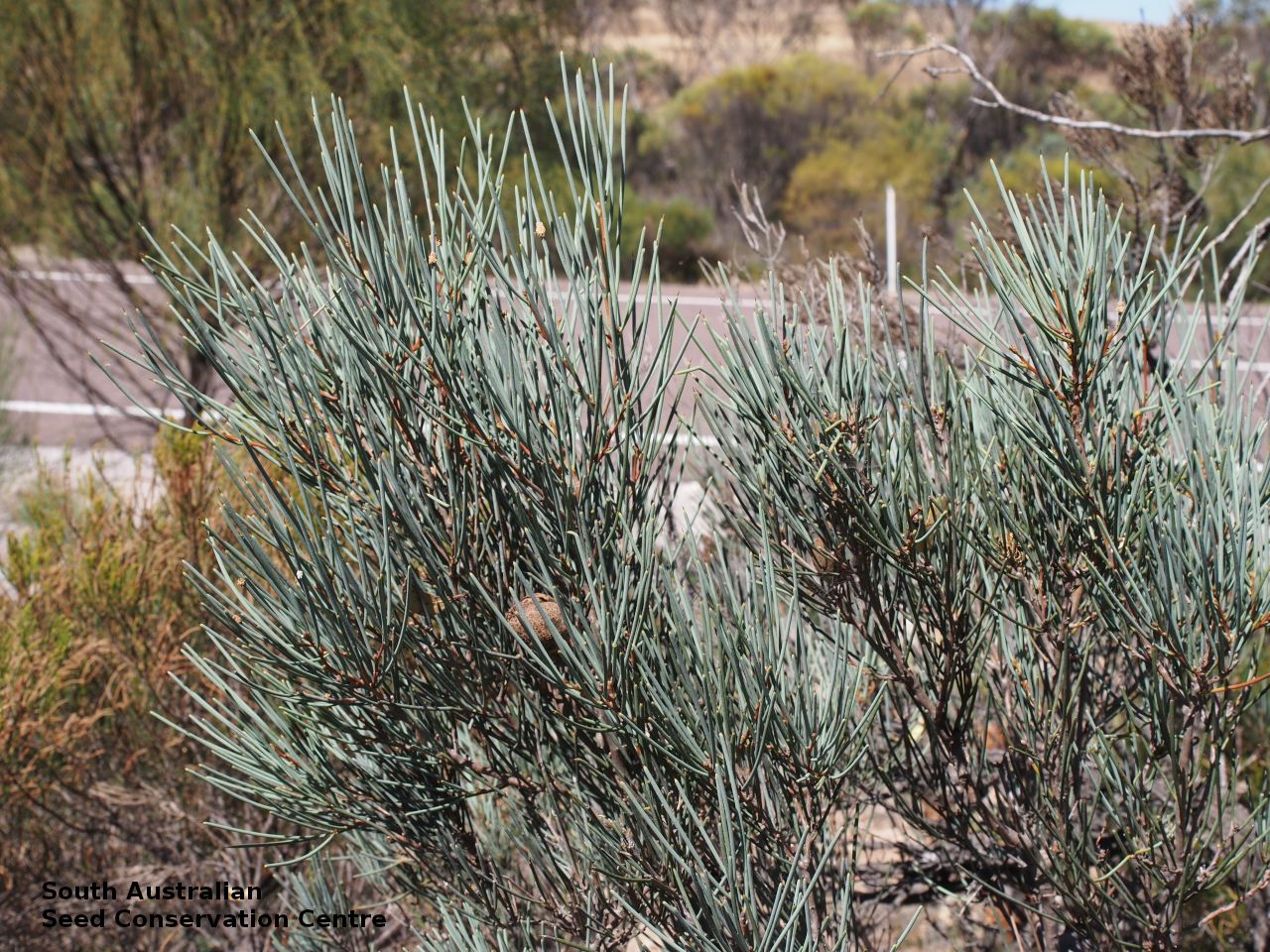
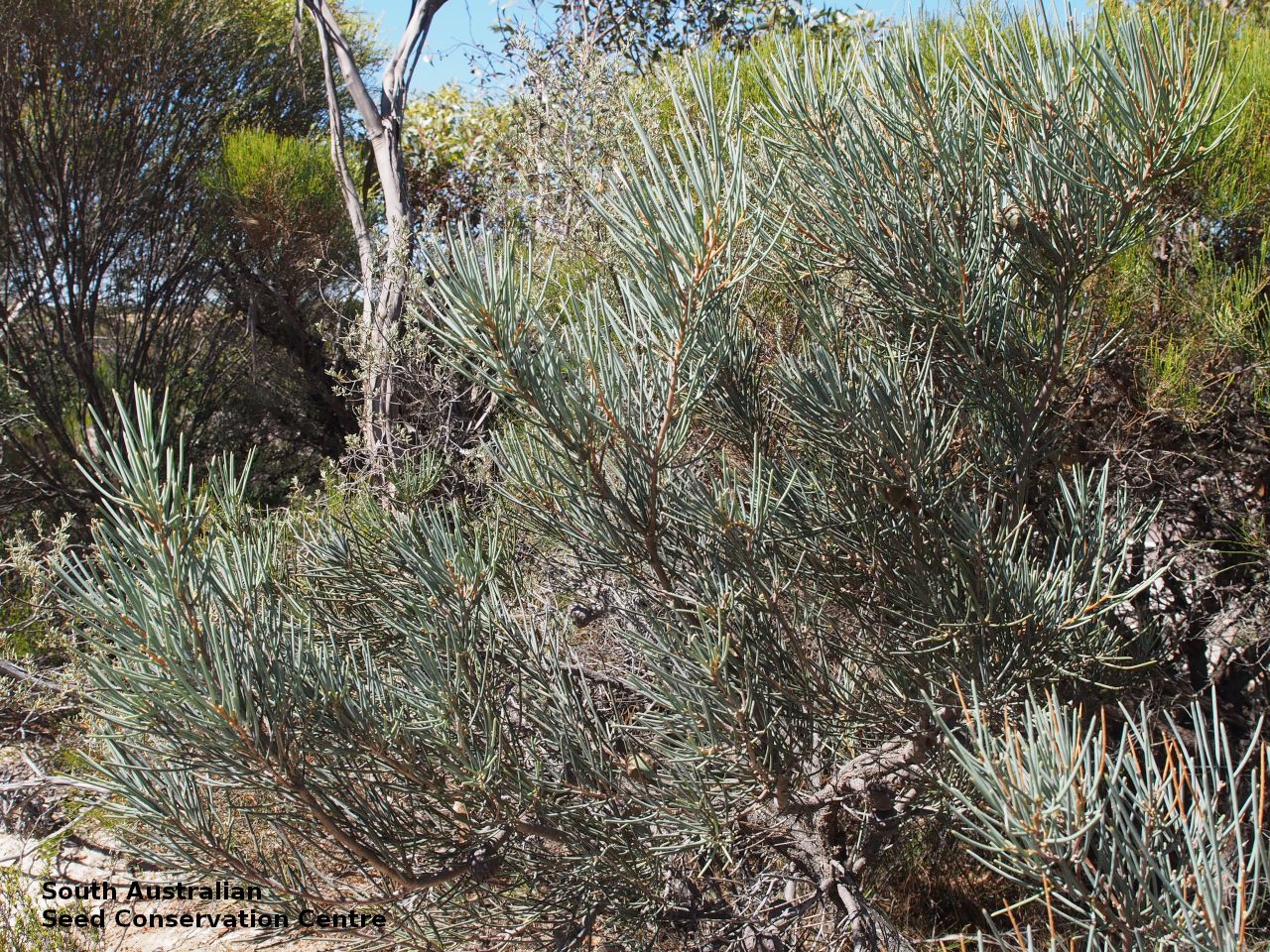
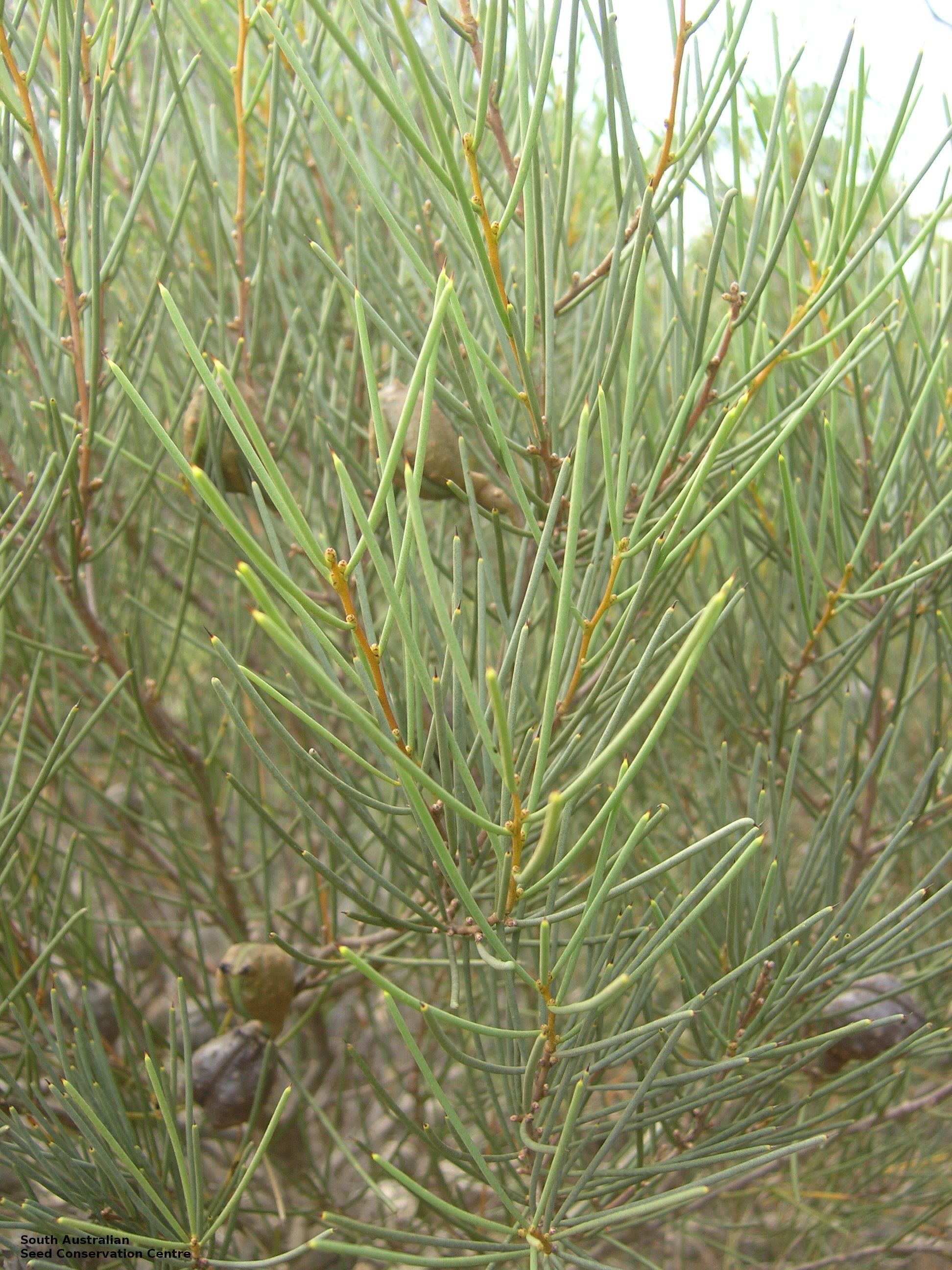
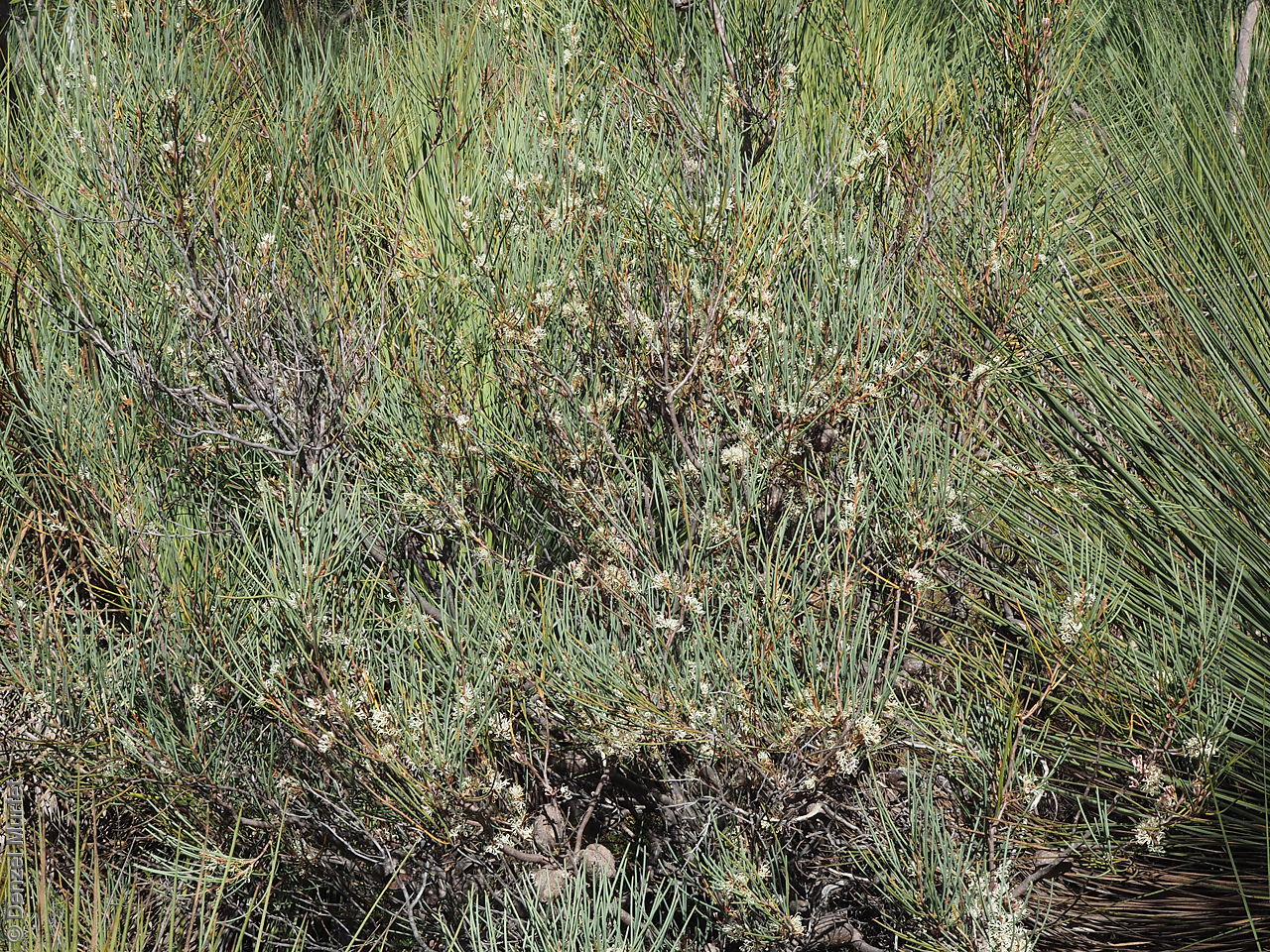
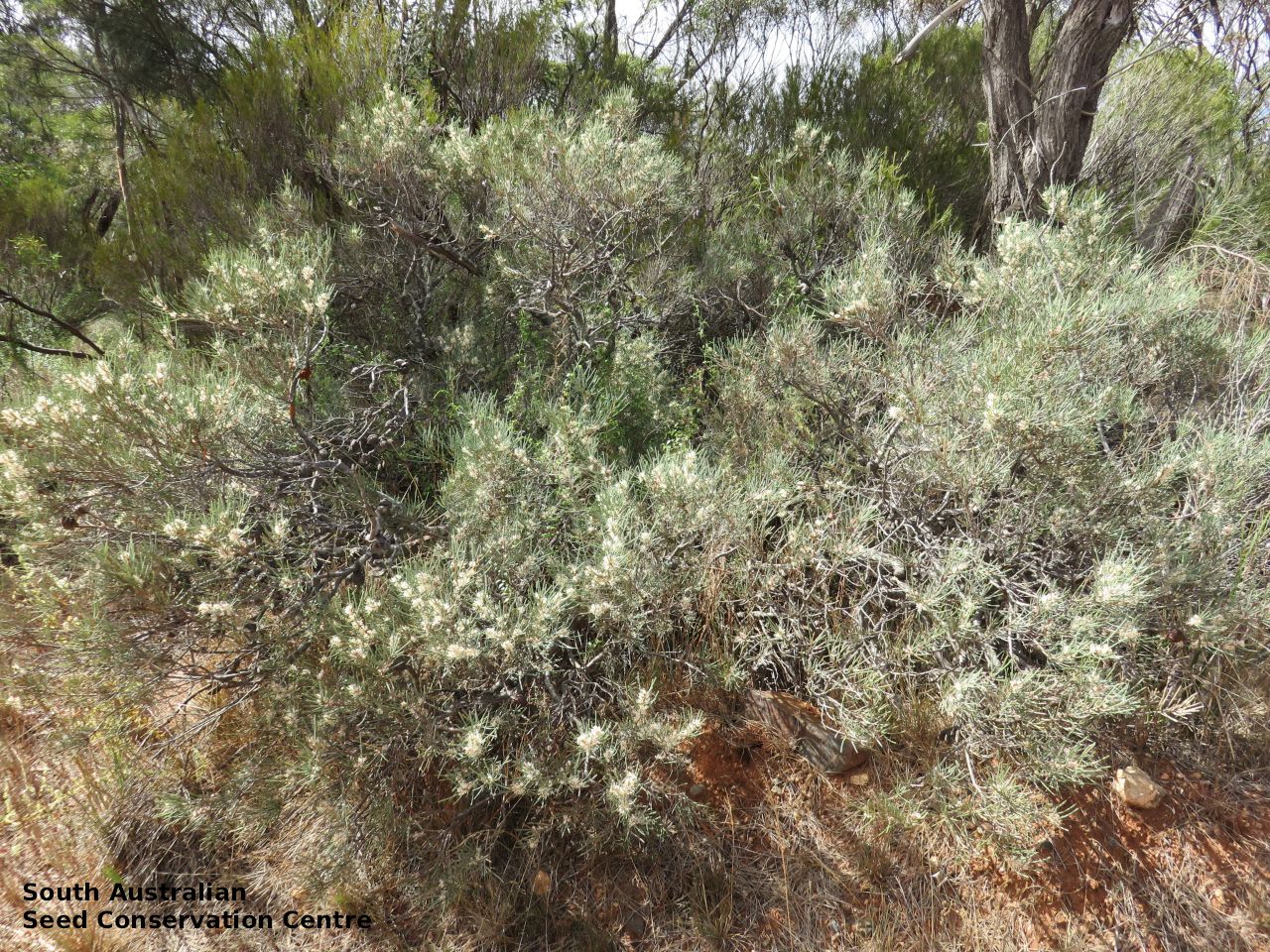
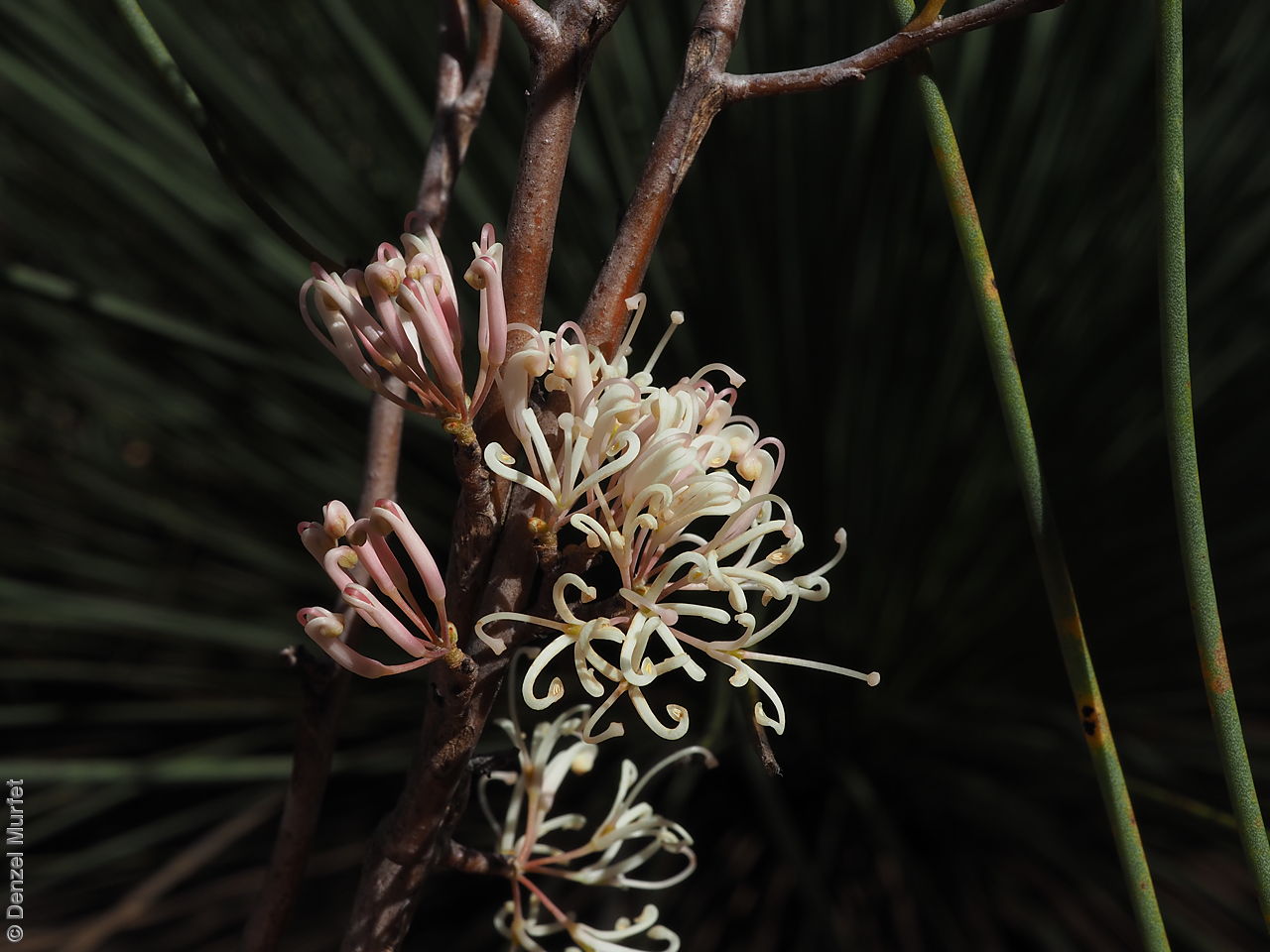
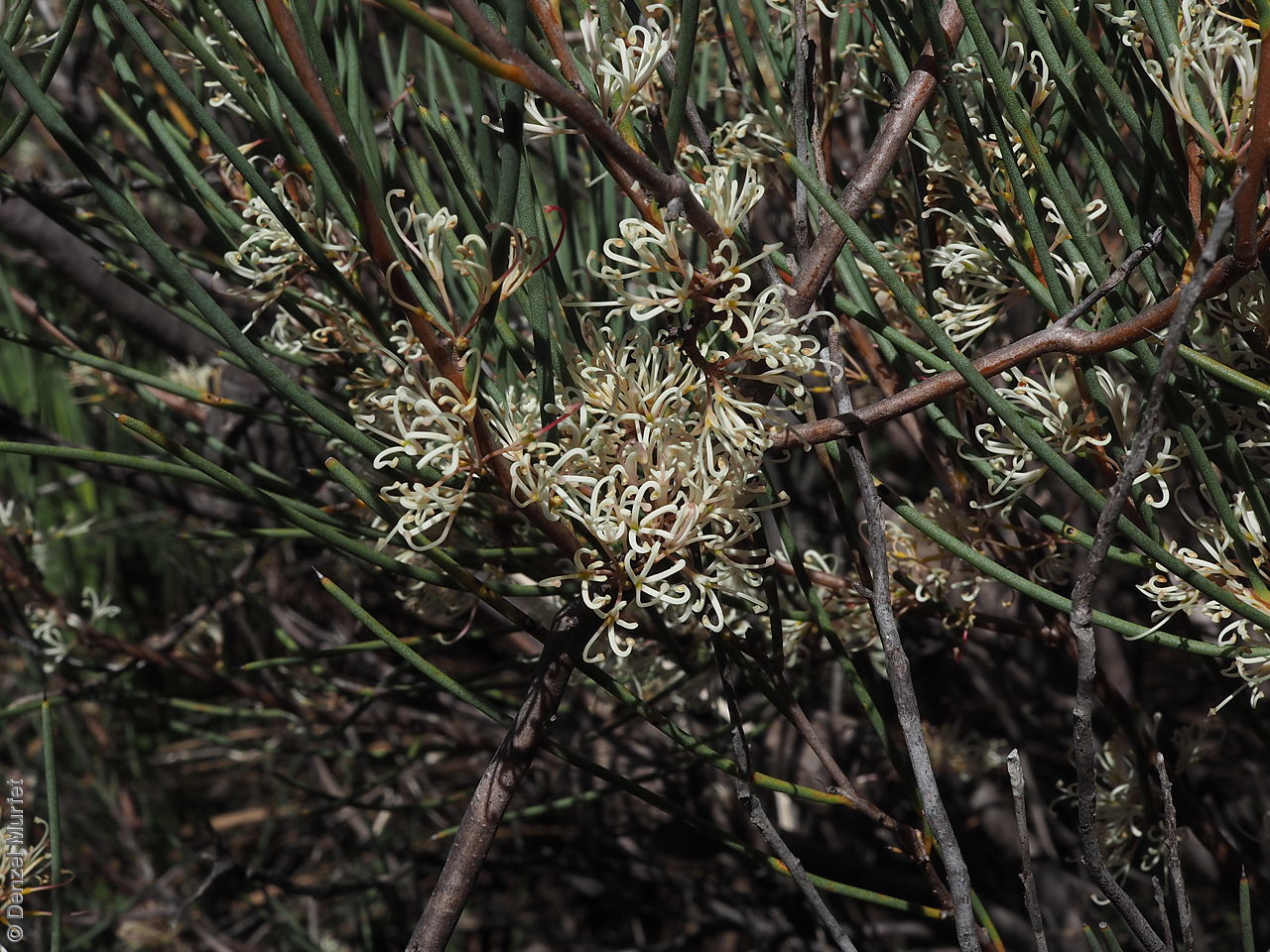
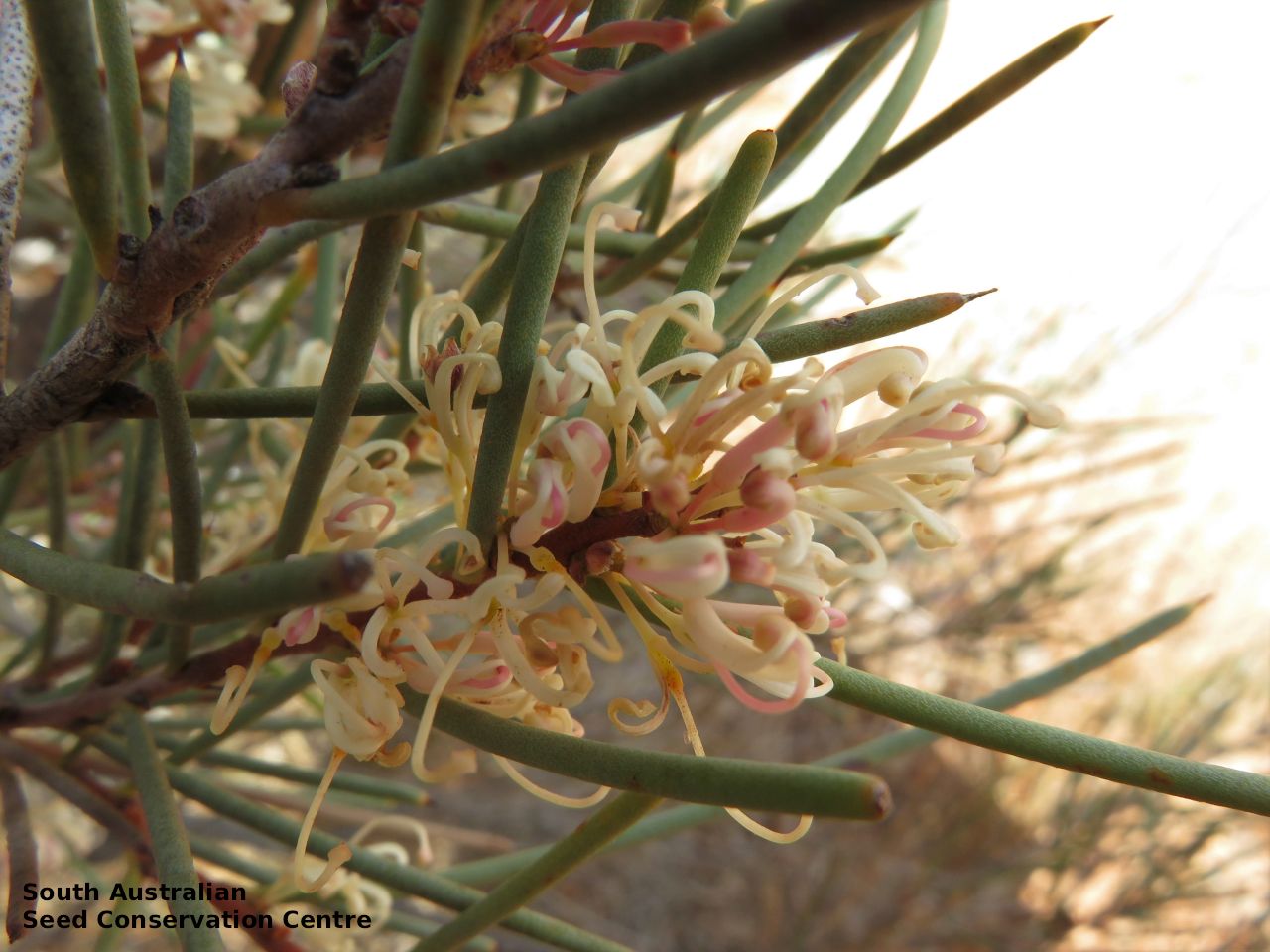
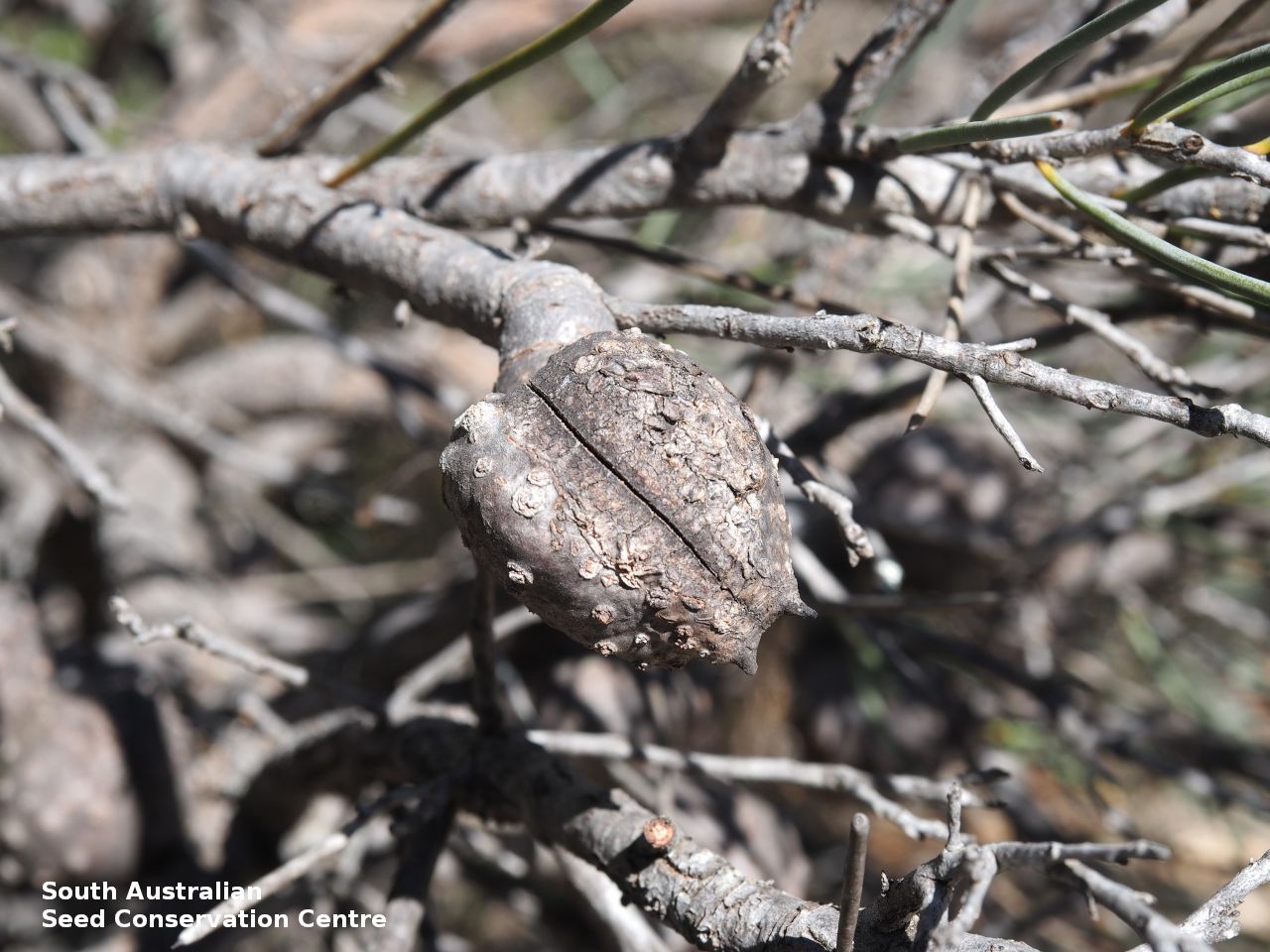
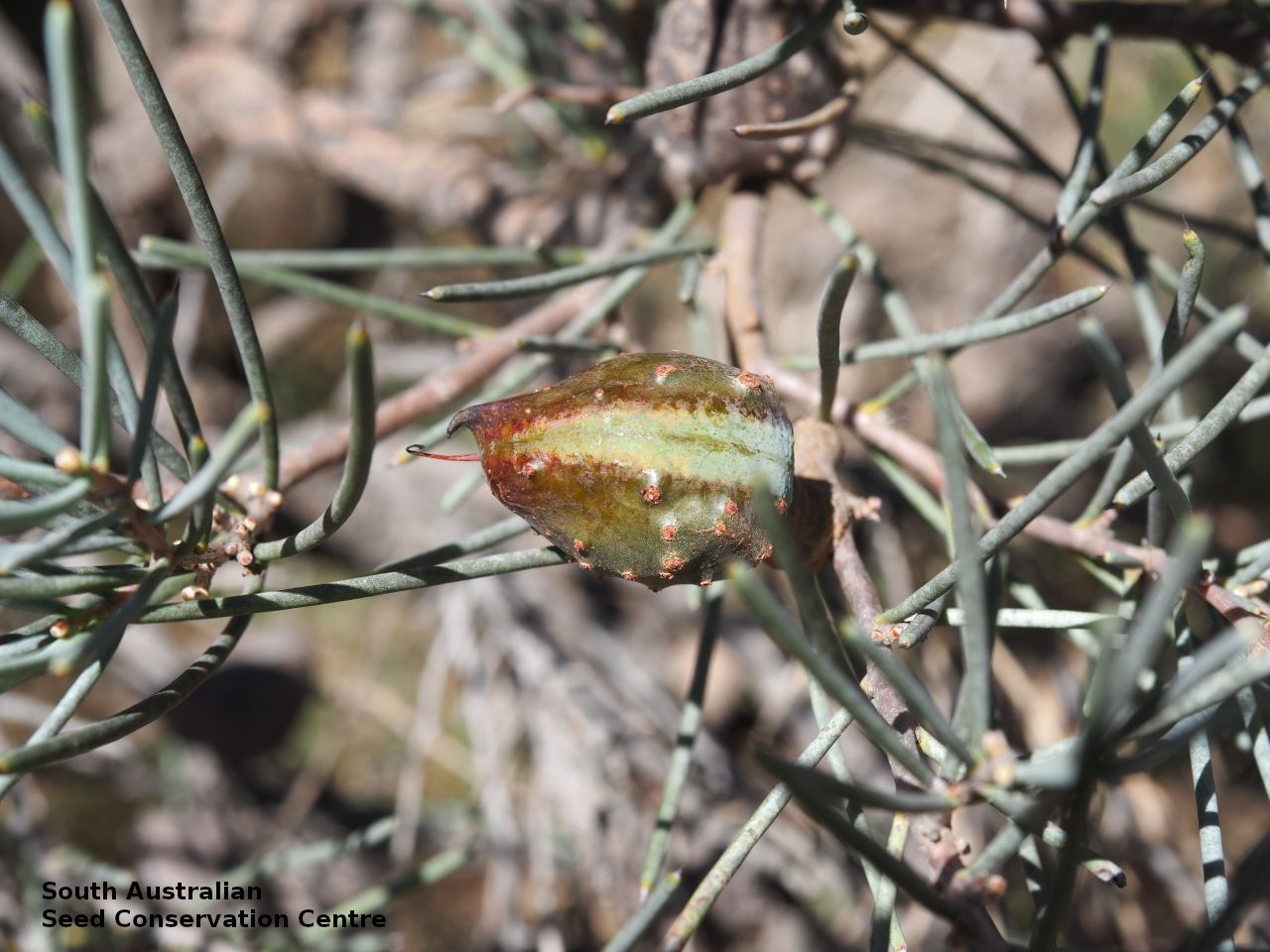
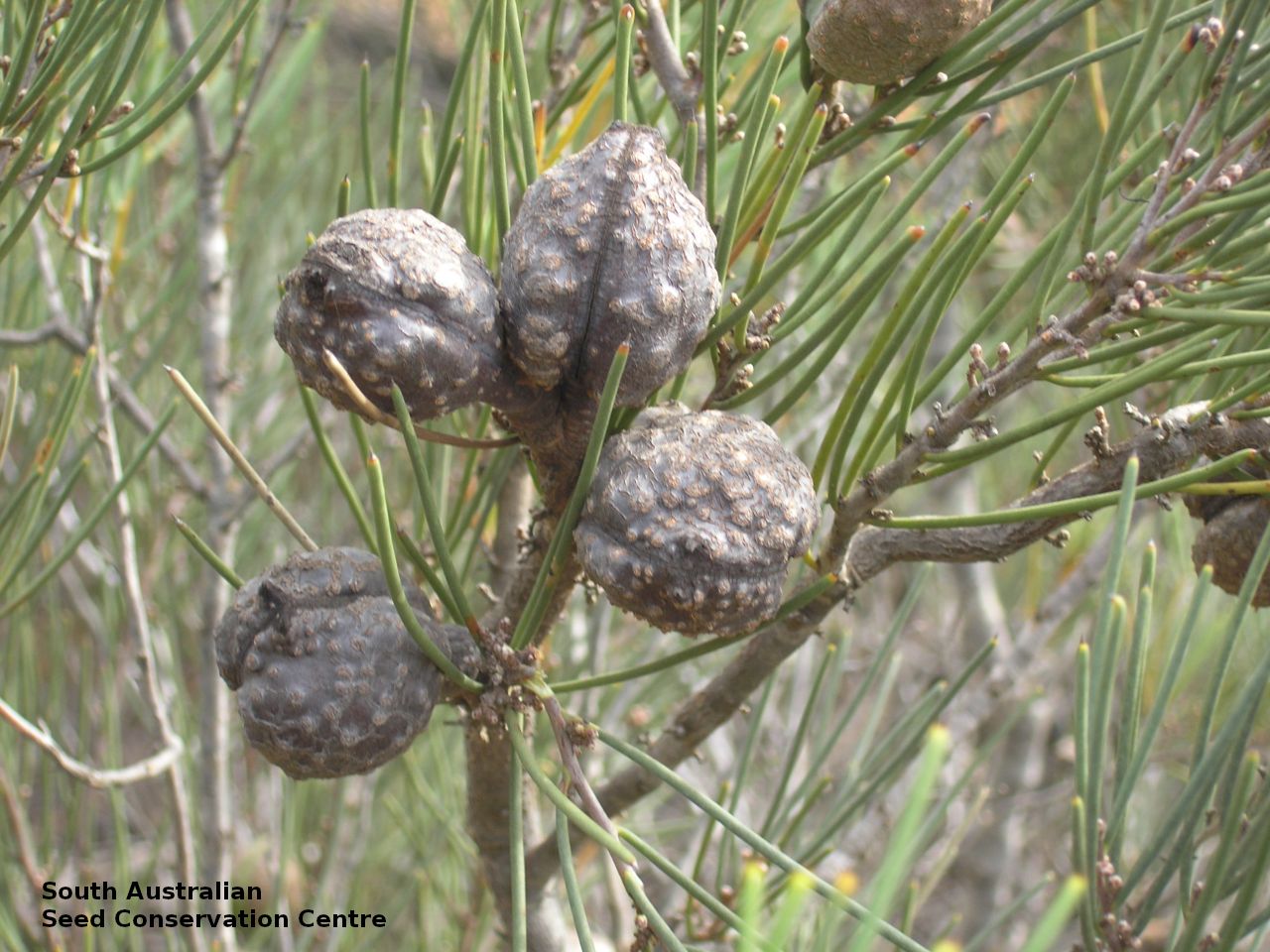
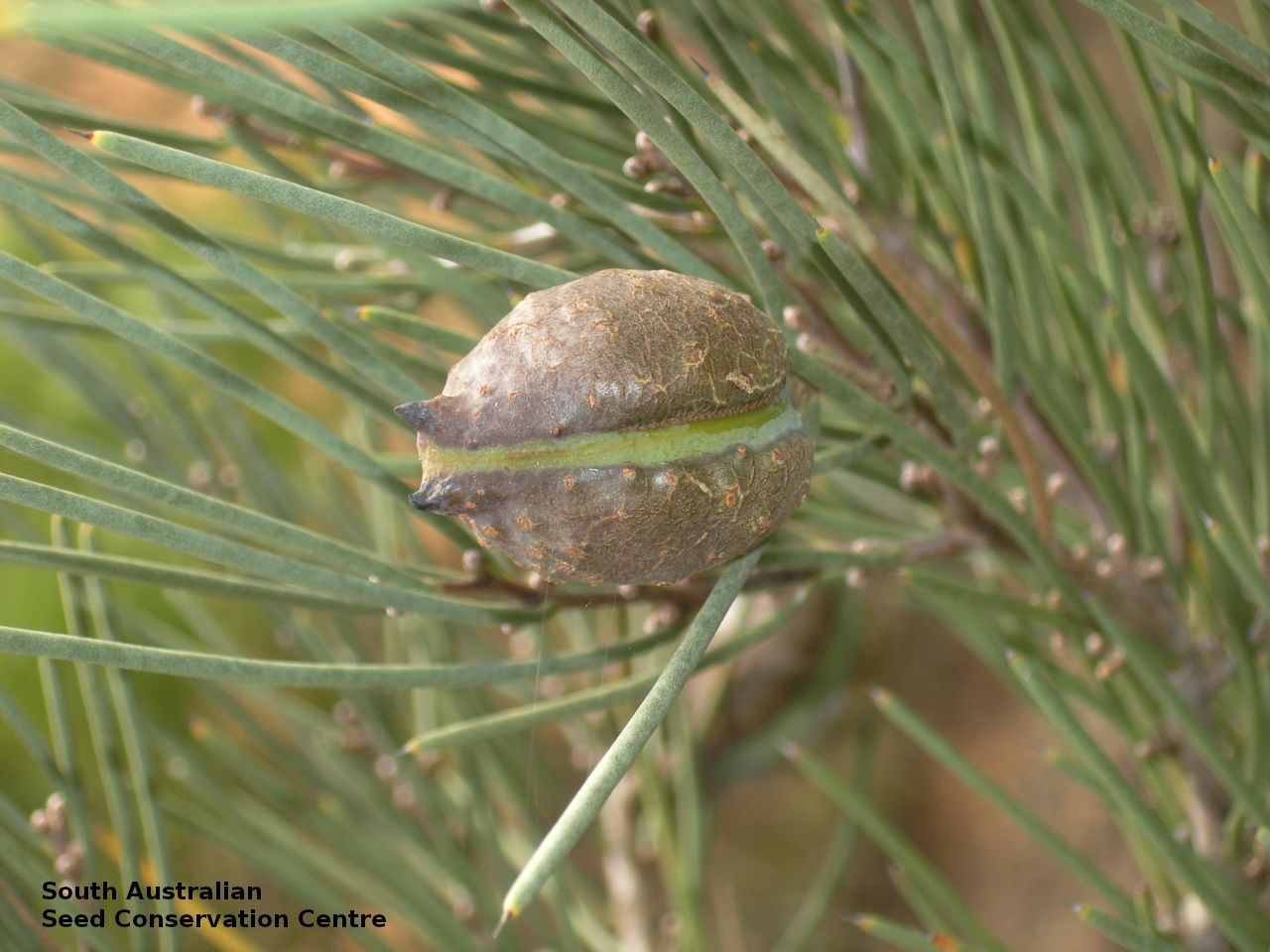
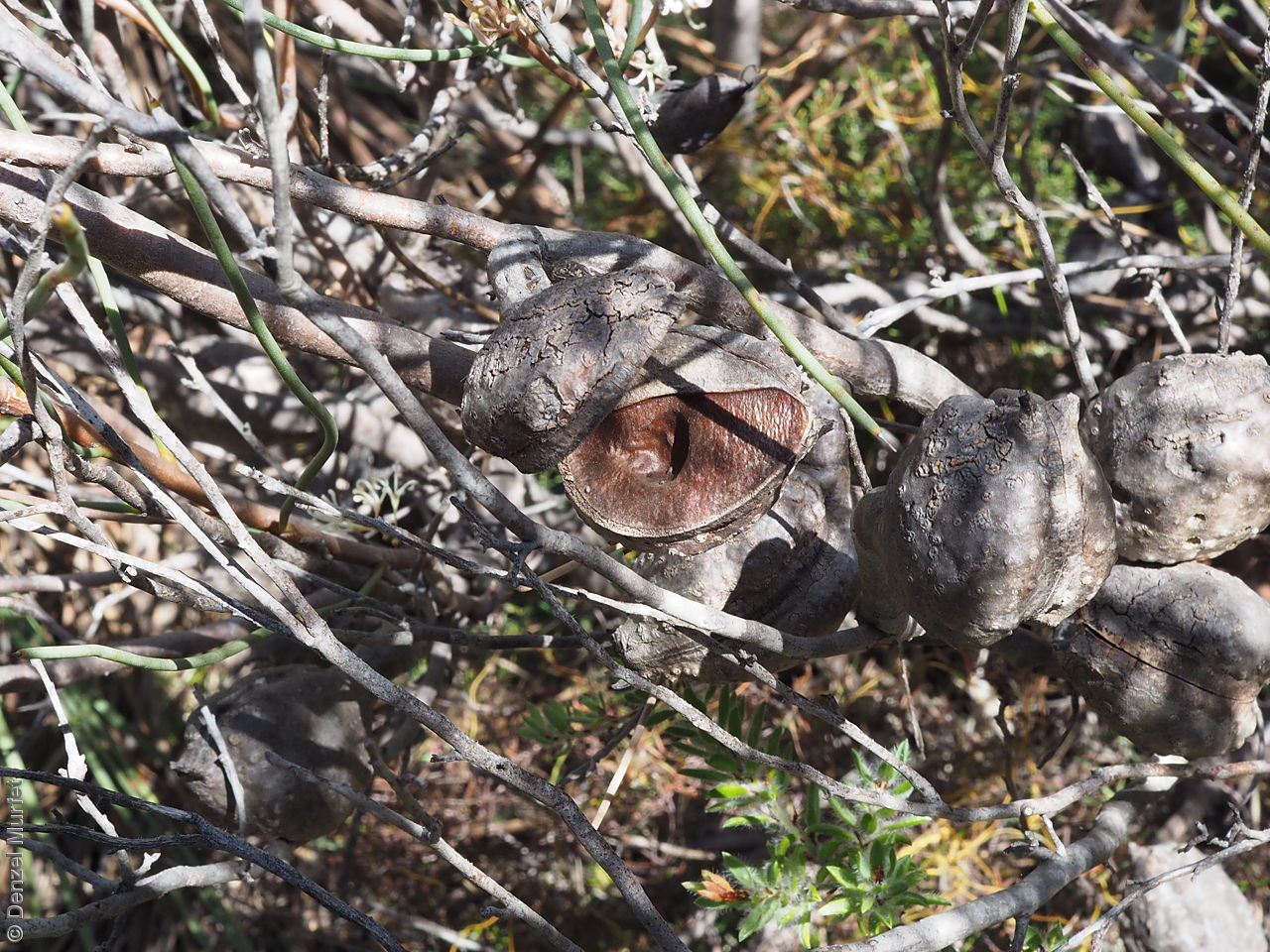
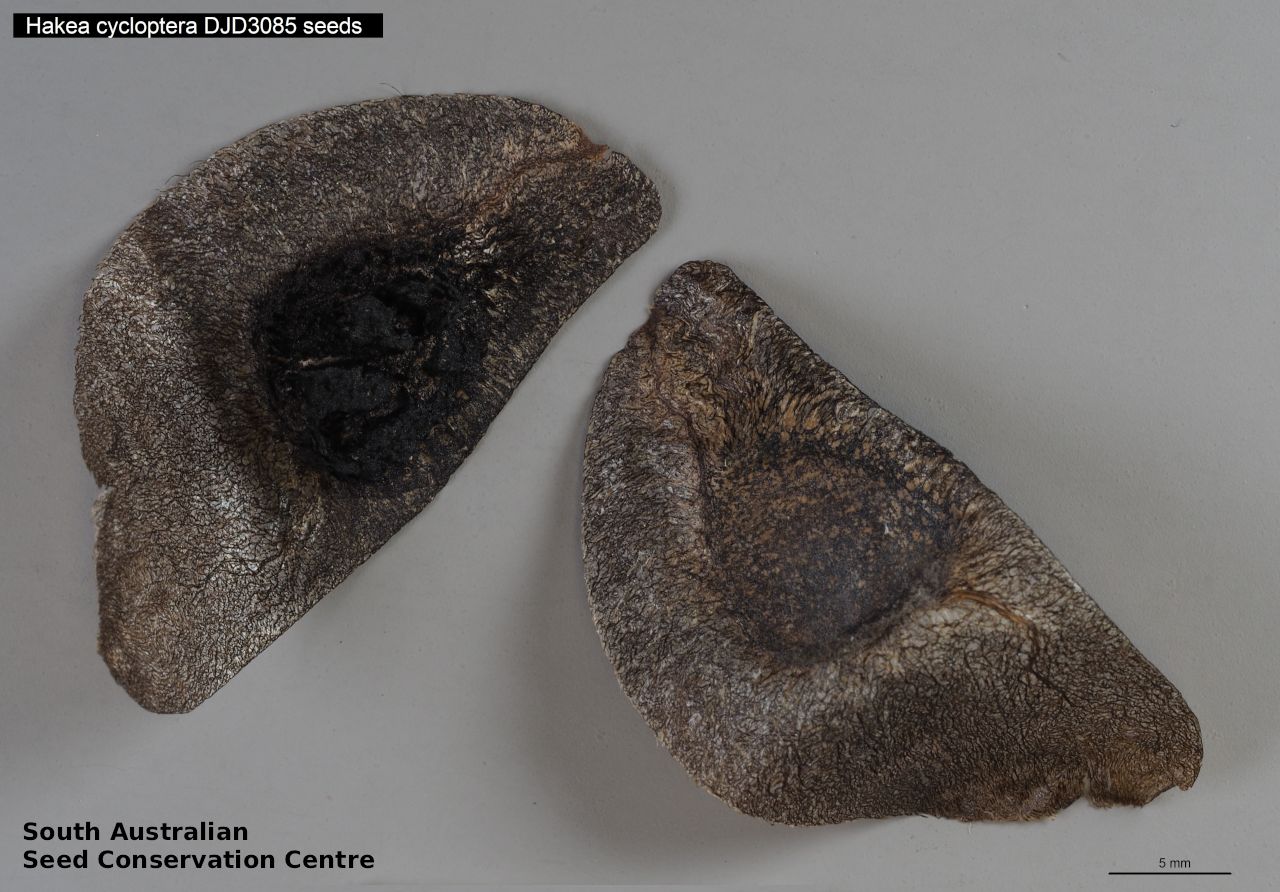
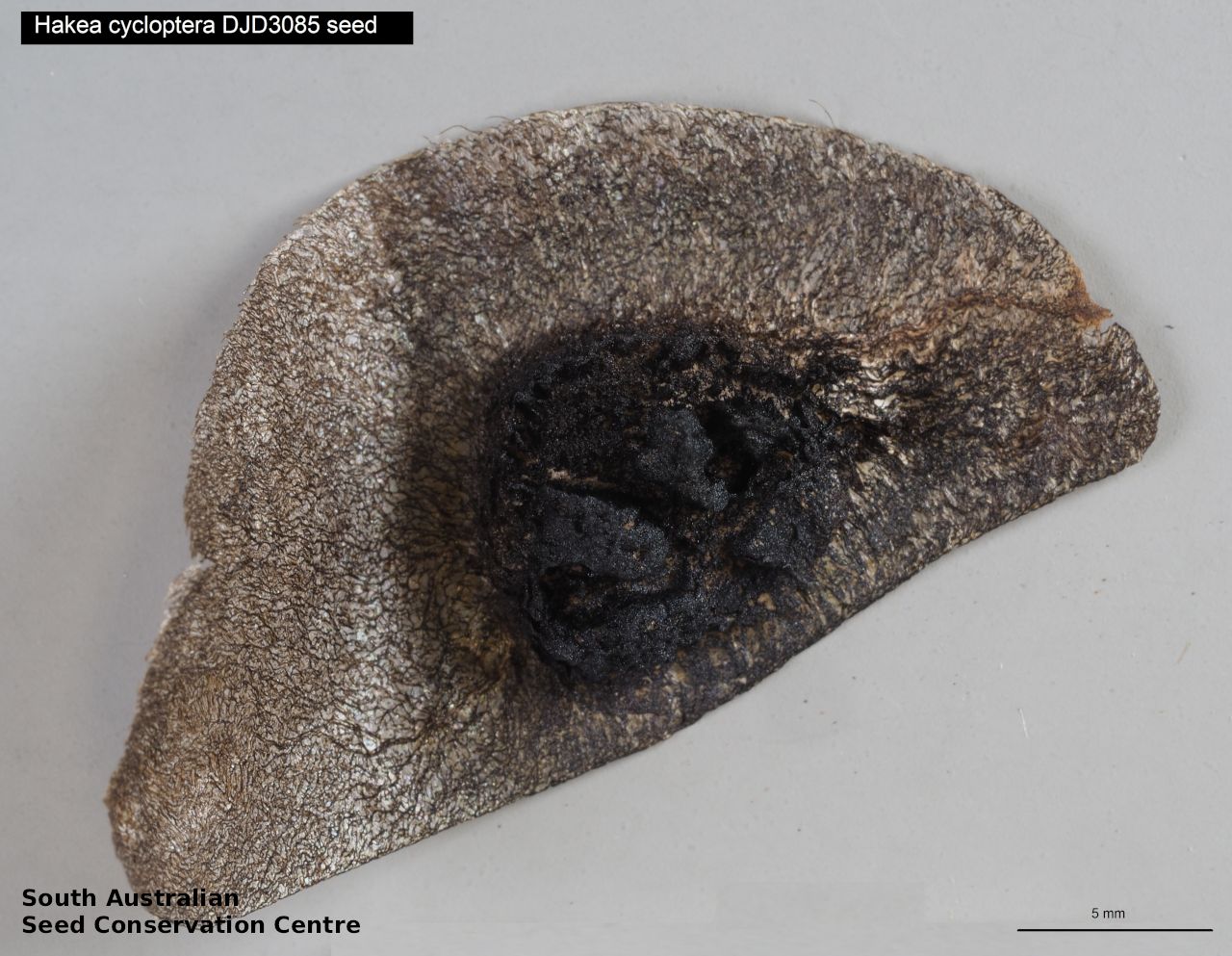

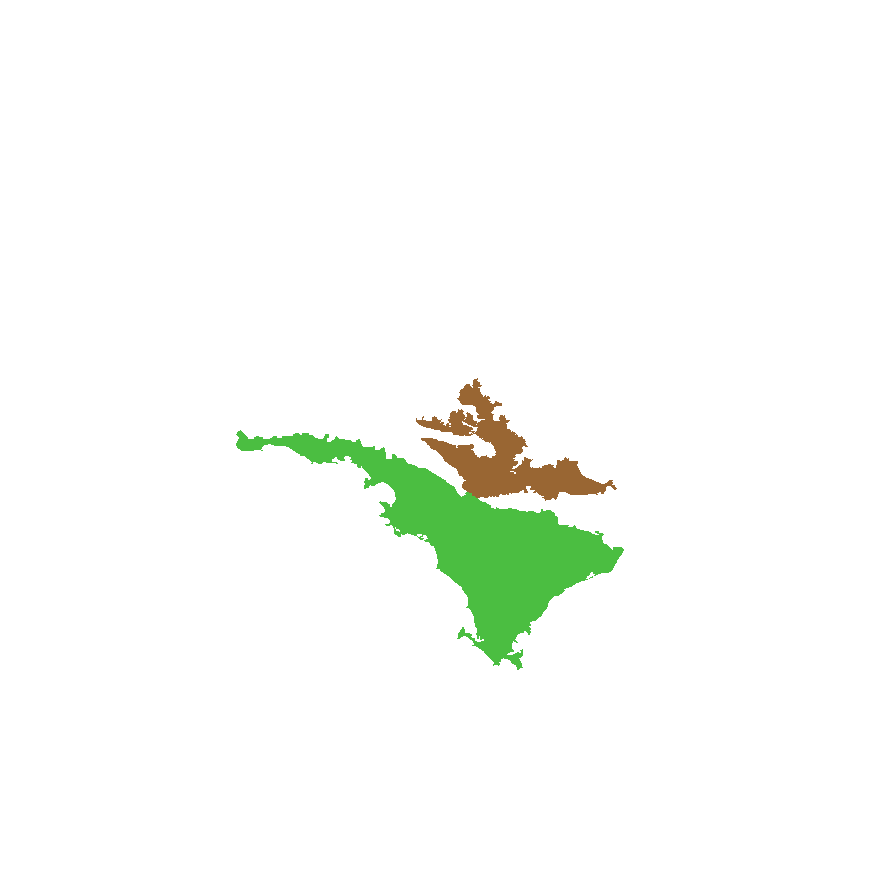
Botanical art
Etymology
Hakea named after Baron Christian Ludwig von Hake (1745-1818), a German horticulturalist and patron of botany. Cycloptera from the Greek 'cyclo, meaning circle and 'pterus', meaning wing, referring to the shape of the seed wing.
Distribution and status
Endemic to South Australia and found only on Eyre Peninsula, growing on sandy soil in mallee scrubs. Native. Common in South Australia.
Herbarium region: Eyre Peninsula
NRM regions: Eyre Peninsula, South Australian Arid Lands
AVH map: SA distribution map (external link)
Plant description
Straggly bush or shrub to 1.3 m high, with white hairs on branchlets and young leaves. Leaves long and narrow, ascending, to 145 mm long and 1.9 mm wide with white hairs; Inflorescence axillary with 1–14 white or pink flowers. Flowering between December and August. Fruits are greyish-brown elliptic to circular woody fruit to 40 mm long and 34 mm wide, with coarse wrinkled surface and two short 'horns' at one end. Fruit splits into two to reveal two seeds. Seed embryo type is investing.
Seed collection and propagation
Collect seeds between January and December. Collect mature woody fruit that are greyish-brown and not split. These will contain seeds. Place the woody fruit in a tray and leave to dry until it split open. Fruits can be placed in the oven at low temperatures to achieve the same result. Place the dried fruit in a bucket and shake to dislodge the seeds from the valves. Separate the seeds from the fruit and store the seeds with a desiccant such as dried silica beads or dry rice, in an air tight container in a cool and dry place. Seeds are non-dormant, viable seed should germinate readily without pre-treatment.
| Location | No. of seeds (weight grams) | Number of plants | Date collected | Collection number Collection location | Date stored | % Viability | Storage temperature |
|---|---|---|---|---|---|---|---|
| BGA | 580 (29.09 g) | 5 | 25-Nov-2004 | PJA92 Eyre Peninsula | 28-Mar-2006 | 95% | -18°C |
| MSB | 1,600 (88.4 g) | 40+ | 19-Nov-2007 | TST231 Eyre Peninsula | 95% | ||
| BGA | 460 (29.06 g) | 15 | 20-Nov-2007 | TST235 Eyre Peninsula | 19-Sep-2008 | 100% | -18°C |
Number of plants: This is the number of plants from which the seeds were collected.
Collection location: The Herbarium of South Australia's region name.
% Viability: Percentage of filled healthy seeds determined by a cut test or x-ray.